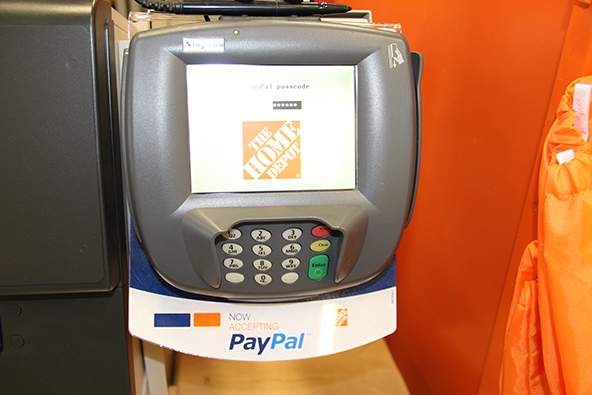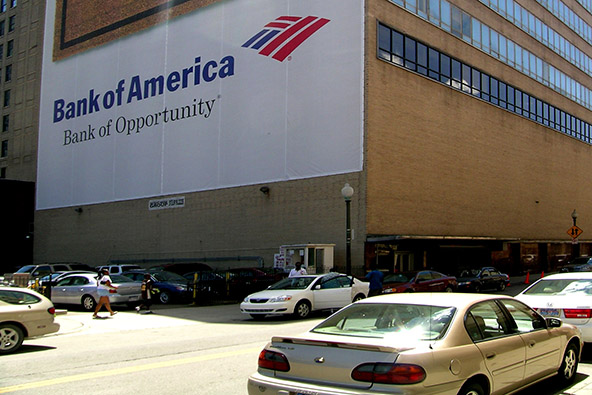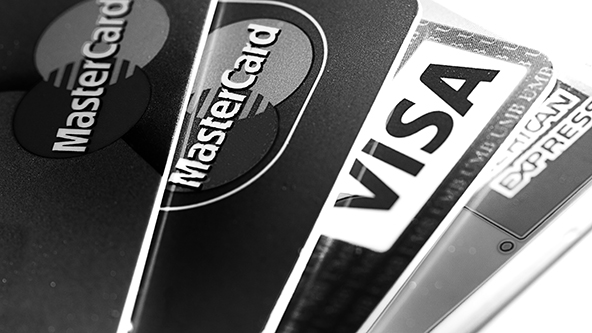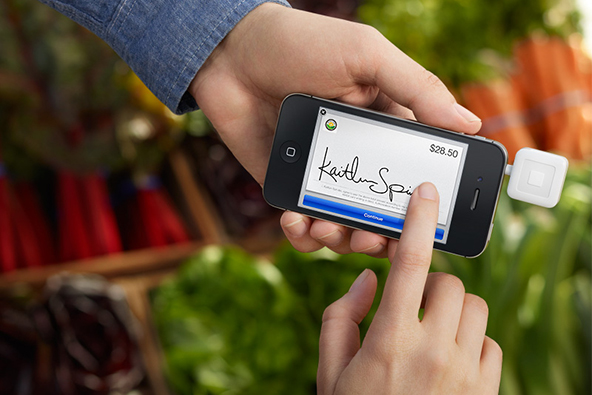Allied with Discover, PayPal Moves Offline, but How Will It Fare?

“PayPal will soon be ubiquitous in U.S. retail stores, but just being there may not be enough”, warns Reuters’ Alistair Barr in his analysis of the latest developments in what must be the payment processor’s most ambitious project ever. Eight months ago PayPal allied itself with Discover — the fourth-largest U.S. credit card processing network — with the stated objective of bringing its services to “more than 7 million merchant locations across the U.S., and potentially to millions of international merchant locations in the future”. Well, starting next Friday, PayPal will indeed be accepted as a payment option everywhere Discover is (two million merchant locations, by Barr’s count). Yet, availability will count for nothing, unless consumers actually use the payment option at the checkout. But will they?
Well, Barr reports that the initial signs are not encouraging and I, for one, am not surprised. Whereas PayPal’s value proposition for the retailers seems irresistible, I have always struggled to see why consumers would choose to use PayPal at the checkout, rather than the credit or debit cards, or even checks, which fund their PayPal transactions anyway. After all, swiping a card is familiar and fast, whereas PayPal’s point-of-sale (POS) checkout process is more than a bit cumbersome. And Barr’s report confirmed my misgivings. Yet, PayPal is in it for the long run and the processor may still find a way to come up on top at the end.
What’s in It for Discover?
Whereas it is quite clear why PayPal would want to get into physical retail, which, as Barr reminds us, is ten times as big as the e-commerce where PayPal dominates, it is more difficult to see what Discover would get from such an arrangement. Why would a credit card network want to provide a rival with access to its payments system? Yes, Discover would be collecting a small fee for each PayPal transaction it facilitates, but it would also enable eBay’s subsidiary to establish itself as a bona fide offline processor. Is the trade-off worth it? After all, who is to say that, once established, PayPal wouldn’t just pull out of the deal, become the nation’s fifth payments network and leave Discover precisely where it was before the alliance was struck? In fact, I’m pretty certain that PayPal will eventually strike out on its own.
Well, I don’t know the answers to these questions, but it seems to me that, at least for now, Discover is more focused on closing the gap with Visa, MasterCard and American Express and sees in PayPal a like-minded ally. If the alliance helps Discover gains some ground on its bigger competitors, it may well be worth the risk of creating a new rival. Moreover, PayPal may be instrumental in helping Discover establish itself outside of North America, where its presence is still limited. We shall see.
What Do the Retailers Get?
The most interesting aspect of PayPal’s offline foray is the processor’s strategy for wooing retailers. I’ve done it before, but let me give you the basic outline once more, to help you understand why the Visas and MasterCards of the world are so uneasy about PayPal’s physical ambitions.
So when PayPal struck a deal with Home Depot, we learned that the processor had agreed to subsidize the retailer’s payment acceptance costs. Home Depot got lower processing rates than Visa’s and MasterCard’s interchange rates — the fees PayPal has to pay the networks’ card issuers (of whom Chase, Bank of America, Citi and Capital One are the biggest) for each card transaction processed for the retailer. Uniquely, however, PayPal can subsidize the retailer and still not lose money. Quite the opposite.
The crucial thing to understand is that about 55 percent or so of PayPal’s transactions are funded from its users’ debit or credit card accounts, whereas the remaining 45 percent are funded from the users’ bank accounts. As Home Depot is being charged less than the full interchange amount, PayPal is losing money on the card-funded portion of its customers’ transactions. However, on aggregate the processor is still in the black, because its margins on the bank account-funded transactions are big enough to more than offset the losses from the bank card transactions. And perhaps the best thing is that no one else can run such an operation, at least not on nearly as large a scale.
Would Consumers Come on Board?
So it is just possible that PayPal’ offline incursion would benefit its ally Discover and it is immediately apparent why retailers would love such an arrangement. But would consumers be using the new payment option? Well, I’ve been skeptical since the very beginning. Here is what I said in my initial review:
However, the benefits for consumers are somewhat less conspicuous and the first thing that I noticed was that the PayPal POS checkout process is a bit cumbersome. In addition to a PIN, the customer is asked to enter her cell phone number, before a transaction can be completed. The idea is that a payment confirmation can be texted to the user, alerting her that a receipt is stored into her PayPal account. That’s unnecessary and excessive. The receipt will have already been printed out at the checkout and I know that I can look up the transaction in my PayPal account anyway. Not to mention that I, for one, would never give my cell phone number to a retailer (or PayPal, for that matter) to avoid being spammed with promotions.
And here is what Barr tells us about consumers’ initial reaction to PayPal’s rather clunky checkout process:
PayPal’s uphill battle becomes clear from interviews with employees at the Home Depot store in San Carlos, California, one of the first to test the new service. Cashiers there said very few customers chose to use PayPal — and some who did soon gave up because they found keying in a bunch of numbers was not as convenient as swiping a credit card.
“I ask at my local Home Depot and I get the same response — not many people have used it,” said Brian Kilcourse of RSR Research, a consulting firm focused on retail technology. “Unless there are specific benefits that consumers can touch and feel, they’re unlikely to adopt something new.”
So no surprises here. However, PayPal may still manage to pull off a winner and mobile payments may well come to the processor’s rescue. If NFC or another technology eventually comes to dominate POS checkouts, PayPal may well become as convenient a payment option as any. And that is precisely what Don Kingsborough, PayPal’s executive in charge of retail, hopes will happen.
The Takeaway
So PayPal is playing a long game on the offline front. Initially, the processor’s biggest priority has been to ensure that it wins over retailers and that objective has clearly been achieved — after all, there are few things merchants like better than lower credit card costs. At the same time, PayPal has managed to win access to Discover’s vast merchant network and will doubtless keep doing its best to keep it, at least until it develops its own merchant relationships, which will take time. Finally, PayPal is learning how to win over offline consumers. Promotions can always be counted on to melt some of the ice and Barr tells us that this has proved to be the case at Home Depot as well. But the biggest difference is likely to be made by the rise of mobile payments, if PayPal gets them right, that is.
Image credit: Allthingsd.com.


